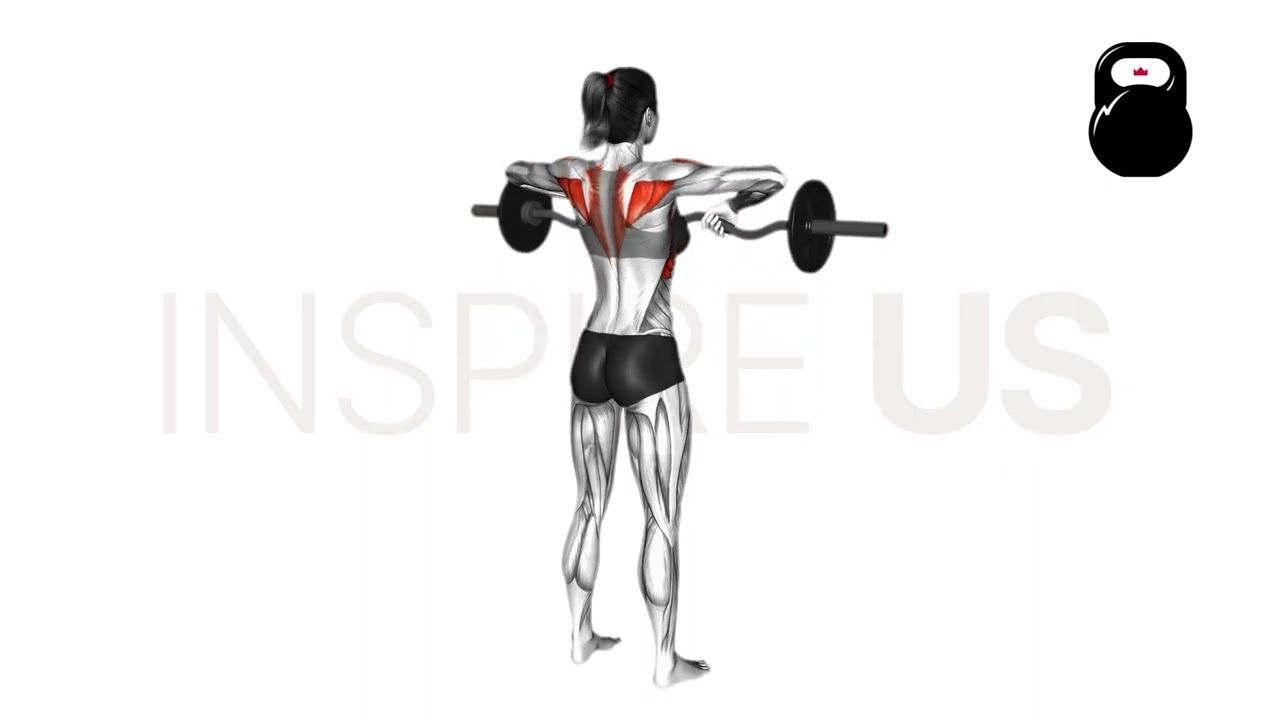Upright Row: Benefits, Muscles Worked, and More
Though controversial, there is no denying that the upright row is quite effective at building the traps and shoulders.
When performed correctly, the upright row can be a veritable addition to any pull day workout. Bodybuilders and individuals seeking a more well-rounded upper torso will benefit the most from this exercise.
If you aren’t familiar with an upright row, it can be described as a vertical pulling movement that targets the traps and deltoids through elbow flexion, shoulder abduction and scapular elevation. For the safest possible execution, we advise performing the upright row with an EZ-curl bar.
What are Upright Rows?
In technical examination, the upright row is identified as a moderately intense compound movement involving use of the elbows flexors, upper trapezius and all three heads of the deltoids to pull a weight vertically upwards.
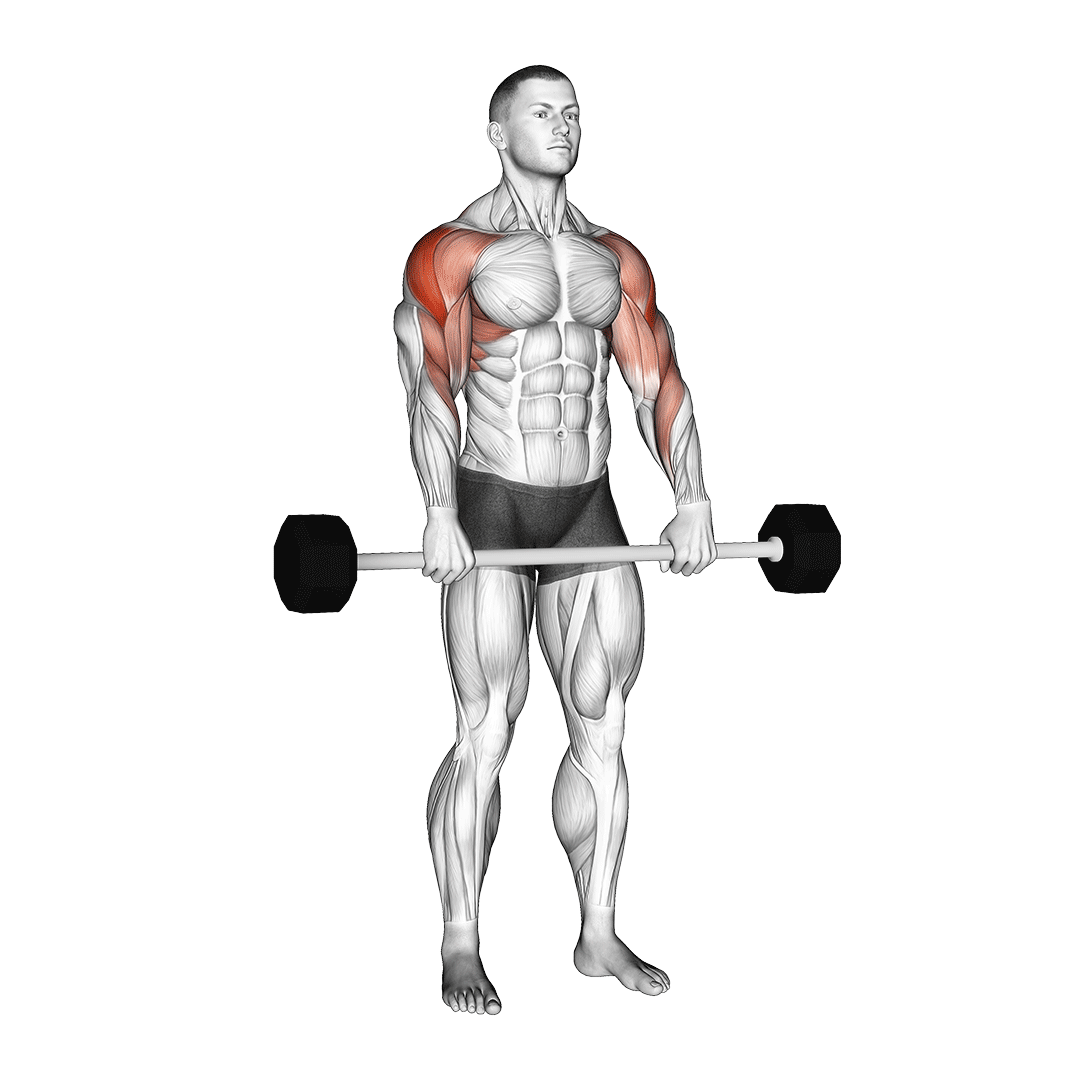
Upright rows have been the subject of some level of controversy due to their supposed risk of shoulder impingement or other injuries. Fortunately, so long as the exercise is performed with proper form and a solid warm-up routine, it is unlikely these injuries will occur.
The upright row is most often employed by bodybuilders or similarly hypertrophy-focused lifters due to its capacity to build the trapezius and deltoids simultaneously.
These muscles contribute greatly to the appearance of muscularity in the upper body - a look that is only further enhanced when targeted with the large range of motion the upright row utilizes.
Is the Upright Row the Right Exercise for You?
Although it is true that most of the upright row’s injury risk can be mitigated through proper form and warm-ups, the form itself requires some level of pre-established technical knowledge.
As such, only lifters of an intermediate or advanced level of experience should do upright rows.
If you’re new to weightlifting or have recently recovered from a shoulder injury, try seeking out the guidance of a professional coach.
How to do an Upright Row
To perform an upright row correctly, the lifter will begin by gripping an EZ-curl bar at the front of the torso in a double-overhand grip. The feet should be spaced a stable distance apart, with the knees locked and the torso vertical.
Keeping the head facing forwards and the upper back neutral, the lifter begins the repetition by bending both elbows and drawing the barbell towards their chin.
Mid-way through the pull, the elbows will be pointing out to the sides and will continue pointing in this direction until the apex of the movement is reached.
Once the bar is beneath the chin and the upper arms are above the shoulders, the lifter slowly lowers the bar until the arms are fully extended once more. This completes the repetition.
Certain versions of the upright row call for a more exaggerated scapular elevation at the top of the movement, as if shrugging the shoulders while keeping the barbell beneath the chin. Though this may increase the risk of injury somewhat, it is up to the lifter to decide whether to include this optional movement or not.
What Muscles Do Upright Rows Work?
Upright rows are a compound movement - although a narrowly-reaching one, at that.
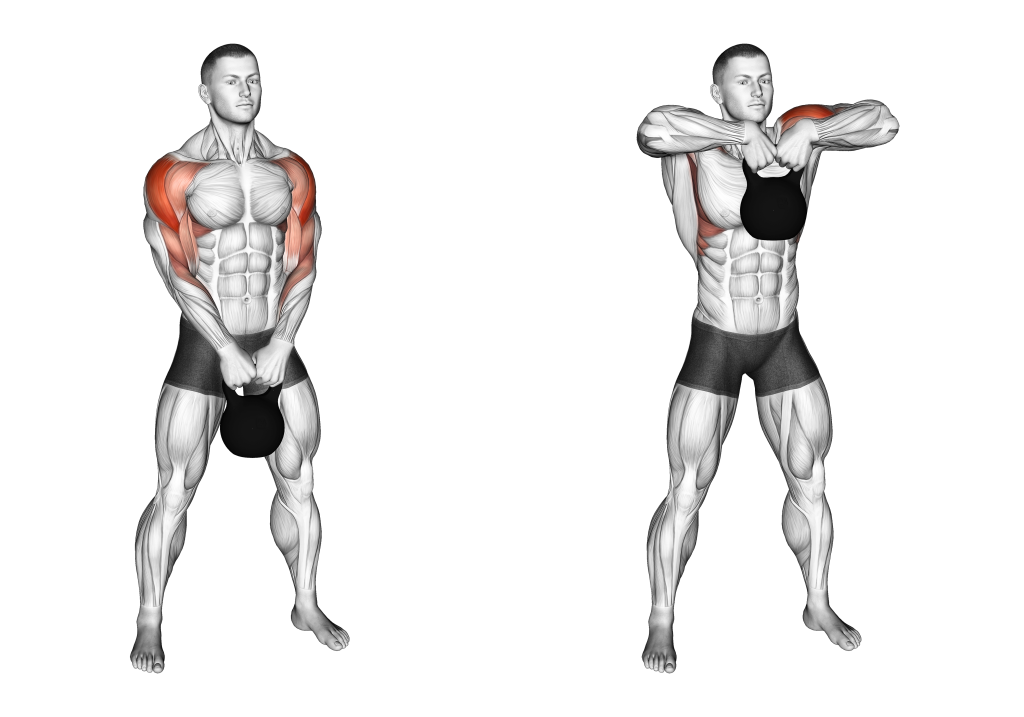
In actuality, only a few muscle groups are actually dynamically contracted by the upright row, and even fewer muscles are used as stabilizers.
Primary Mover Muscles
The main muscles recruited during an upright row are the anterior and medial heads of the deltoids, as well as the upper section of the trapezius muscle.
To a lesser extent, the rhomboids and lower trapezius are also targeted.
Stabilizer Muscles
Apart from those aforementioned muscles, upright rows will also target the posterior deltoid head and biceps brachii in an isometric manner.
What are the Benefits of Doing Upright Rows?
Upright rows have been practiced since the “golden age” of bodybuilding. In part, this is due to the specific benefits it offers over other exercises of its kind.
Excellent for Building Upper Back and Shoulder Mass
Upright rows are excellent for targeting the deltoids and trapezius in a manner that isn’t limited by factors like a fatigued erector spinae or the lats overpowering the traps.
This can allow for a high amount of volume to be targeted towards these muscles, maximizing hypertrophy within a workout.
The upright row’s capacity for high volume is further compounded by its relatively large range of motion in regards to the deltoid muscles. A larger range of motion - when completed correctly - will also help maximize hypertrophy.
Reinforces Scapular Mechanics
When performed with attention paid to a full ROM, the upright row can help lifters reinforce scapular elevation and shoulder abduction.
Because so many exercises more often involve scapular depression, this is a poorly trained biomechanic in many weightlifters and athletes.
Carryover to Exercises Such as the Barbell Row, Overhead Press and Deadlift
Upright rows build much the same muscles as those used in exercises like the row, overhead press or deadlift - only from a different angle. This can be quite effective when correcting certain issues in execution of these exercises.
In particular, lifters who find difficulty keeping their upper back neutral or their shoulder blades retracted during these exercises will benefit greatly from upright rows.
Likewise, those with poor stability during overhead press lockout or drooping shoulders during deadlift lockout will both benefit as well.
Pairs Well With Middle and Lower Back Exercises
Because the upright row primarily targets the upper section of the back, pairing it with movements that place a greater emphasis on the middle and lower back can create a more comprehensive workout.
A few good candidates are the good morning, neutral-grip cable row or the inverted row.
Each of these exercises target muscles like the teres major and minor, the infraspinatus, the rhomboids and the erector spinae - all of which are back muscles that are largely ignored by the upright row.
Common Upright Row Mistakes
Proper form is especially important with the upright row due to its greater risk of shoulder injury. Pay close attention to avoiding the following common mistakes.
Pointing the Elbows Forwards
During a repetition of the upright row, it is important to draw the elbows out to the sides as the bar is drawn upwards.
Pointing them forwards while making this pull can cause greater friction between the humerus and the soft tissues that make up the shoulder girdle, as well as draw the shoulder itself into a poor position.
In most cases, the elbows pointing forwards is a result of the hands being placed too close together. However, it can also occur if the lifter is attempting to move more weight than they are able while leading with their elbows.
Hand Placement is Too Narrow
Ideally, an upright row will place the hands a sufficient distance apart to allow for the elbows to point to the sides. While this will depend on each individual lifter, most often, the hands being parallel to the thighs will suffice.
Placing the hands too close together will not only compromise the elbows and shoulder joints, but also recruit the deltoids less effectively by shifting emphasis to the trapezius.
Excessive Internal Shoulder Rotation
In order to reduce the risk of shoulder impingement or tendinopathy, it is important for the lifter to avoid excessively rotating their shoulders inwards.
This will create a more forward-hunched appearance to the upper torso, and decrease the distance between the humerus and other structures of the shoulder - leading to irritation.
Rather than hunching the shoulders forwards as the barbell is pulled upwards, the lifter should instead seek to draw them upwards in the same manner as their scapula, aiding with the pull and keeping the joint in a relatively more neutral position.
Excessive Volume Leading to Rotator Cuff Irritation
The past three mistakes mentioned all deal with the main reason why the upright row is considered a high-risk exercise - that being the stress it places on the shoulder joint.
However, even with form followed to the letter, some level of strain and irritation is unavoidable due to the manner in which the upright row is performed. This is not as much of an issue if the exercise is performed for a reasonable number of repetitions.
Avoid performing upright rows for over 20 repetitions a set, or otherwise performing far too many sets within the same workout session.
In addition, remember to also consider other exercises that also move the shoulder joint in the same manner. Performing the upright row for high volume in addition to movements like the bench press or overhead press (within the same session) can lead to irritation and injury.
Poor Upper Back or Neck Curvature
Throughout the upright row, the upper back and neck should remain vertically aligned with the rest of the body. No forward curvature should be present, especially of the cervical section of the spine.
Not only will doing so lead to injury, but poor recruitment of the trapezius muscles will also be an issue. Lifters should strive to keep their upper spine in a neutral orientation and their chin aligned over the top of the chest throughout the exercise.
Alternatives to the Upright Row
If the upright row is too advanced (or risky) for your needs, try the following alternative exercises out.
Monkey Rows
For reduced strain on the shoulders and greater trapezius contraction, the monkey row is the best way to go.
When comparing the upright row and the monkey row, several differences in execution are rather obvious.
Monkey rows have the lifter gripping a pair of dumbbells at the sides of their torso, rather than at the front. In addition, rather than pulling these weights up towards the chin, the lifter instead draws them along the sides of the torso, stopping somewhere around the solar plexus as the upper arms are parallel with the shoulders.
These characteristics not only make the monkey row safer and less strenuous on the shoulders, but also allow for more weight to be lifted alongside a greater contraction of the traps.
Dumbbell Lateral Raises
As a lighter and safer alternative to the upright row, dumbbell lateral raises target much the same muscles of the shoulders - all without the inclusion of the trapezius or biceps.
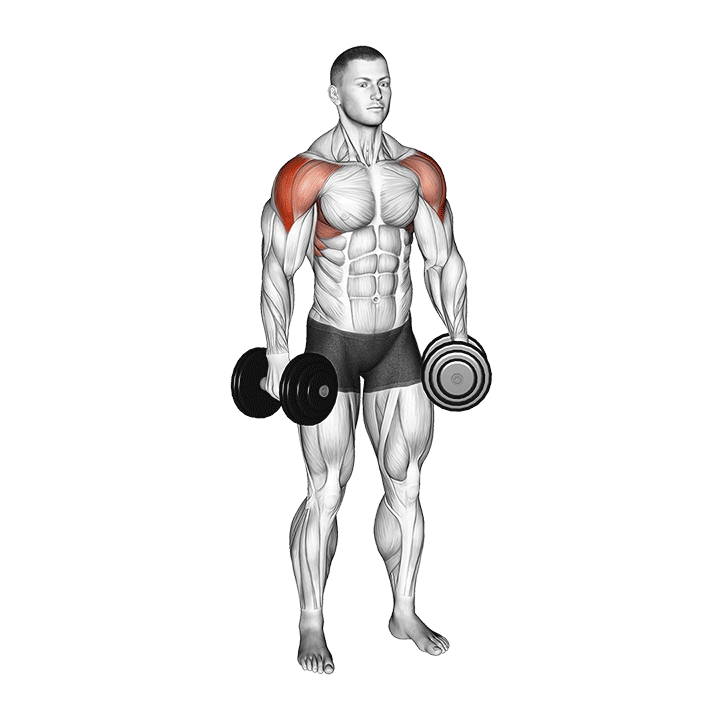
Lateral raises simply involve the lifter raising their arms out to the sides until the upper arms are (at most) parallel to the shoulders. This effectively targets the medial and anterior deltoid heads, but can easily be modified to shift emphasis to the posterior head if needed.
Cable Face Pulls
Face pulls target much the same muscle groups as an upright row, only with a different angle of resistance and significantly safer movement pattern.
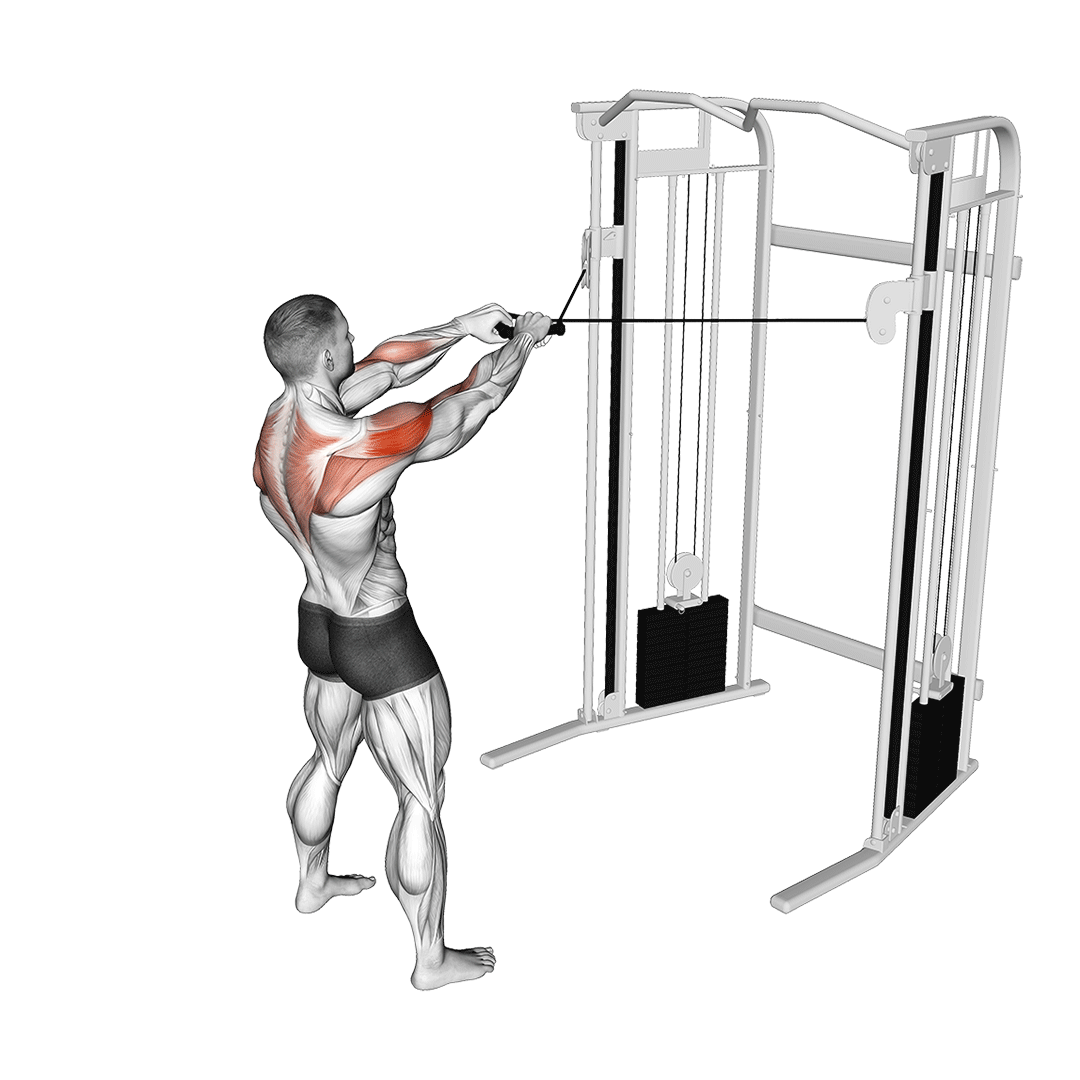
Cable face pulls are ideal as an alternative to the upright row if risk of injury is a particularly issue for the lifter - or if they wish to further emphasize the posterior head of their deltoids.
Frequently Asked Questions (FAQ)
Are Upright Rows Good or Bad?
Like most other questions relating to fitness, the answer is that it depends. Upright rows are indeed effective at building muscle mass and have been employed by professional bodybuilders for decades.
However, due to the upright row’s inherently greater risk of injury, they can indeed be a bad exercise when performed by novices or those with weak shoulder joints.
We advise speaking to a medical professional prior to attempting upright rows.
What is the Best Hand Position for Upright Rows?
A double overhand grip is best for performing upright rows. An underhand grip may make maintaining proper elbow angle difficult, and performing the exercise in a neutral grip may overly involve the biceps.
What Type of Movement is an Upright Row?
The upright row is classified as a compound vertical pulling exercise. It primarily targets the shoulders, traps and biceps.
Final Thoughts
As controversial as the upright row is, there is no denying that it is also effective at building mass in the upper torso.
If you are unsure of whether to perform the upright row - we advise first looking into alternative exercises. Unless the exercise was specifically programmed by your coach (or is specific to your needs), there are many exercises that feature much the same benefits.
That being said, if you do indeed perform the upright row, remember to pair it with exercises that also target the mid and lower back for a more comprehensive pull workout.
Furthermore - avoid using a straight bar, as mentioned at the start of this article. EZ-curl bars will greatly reduce the risk of impingement, although not eliminate it.
References
1. McAllister, Matthew J et al. “Effect of grip width on electromyographic activity during the upright row.” Journal of strength and conditioning research vol. 27,1 (2013): 181-7. doi:10.1519/JSC.0b013e31824f23ad
2. Schoenfeld, Brad MSc, CSCS; Kolber, Morey J PT, PhD, CSCS; Haimes, Jonathan E BS, CSCS. The Upright Row: Implications for Preventing Subacromial Impingement. Strength and Conditioning Journal 33(5):p 25-28, October 2011. | DOI: 10.1519/SSC.0b013e31822ec3e3
3. Lorenzetti, Silvio, Romain Dayer, Michael Plüss, and Renate List. 2017. "Pulling Exercises for Strength Training and Rehabilitation: Movements and Loading Conditions" Journal of Functional Morphology and Kinesiology 2, no. 3: 33. https://doi.org/10.3390/jfmk2030033

